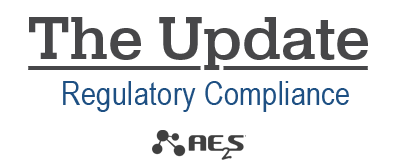Researchers at the PFAS Project Lab at Northeastern University have made an unsettling discovery – per- and polyfluoroalkyl substances (PFAS) contamination in the United States is more widespread than previously thought. Researchers at the PFAS Project Lab released updates to their Known PFAS Contamination Site Tracker and the Presumptive PFAS Contamination Dataset. The tools identify where PFAS have been detected outside of drinking water systems and where contamination is most likely. The datasets and the interactive map can be viewed on the PFAS Project Lab’s website.
PFAS Study Results
The PFAS Project Lab launched the Known Contamination Site Tracker in 2016 with 12 sites. Through comparison with the U.S. Environmental Protection Agency’s (USEPA) PFAS dashboard, PFAS Project Lab researchers have added data for 280 known sites and 21,500 sites that are considered likely to be contaminated. The Known PFAS Contamination Site Tracker now has 2,219 locations.
The researchers discovered the following information about the usage of the sites in the Known PFAS Contamination Tracker:
- 40% waste management
- 29% industrial
- 20% military facilities
- 4% municipal firefighting activity
- 4% airports
The types of sites identified reflect sampling programs conducted at Department of Defense sites and state investigations focused largely on waste facilities, military installations, and specific industries.
The researchers are careful to point out that some States with a significant number of identified sites may appear to be more contaminated because more systematic testing for PFAS has been completed. This is likely true of the State of Minnesota, which settled a PFAS lawsuit in 2018 against the 3M Company in return for a settlement of $850 million. The company was accused of contaminating drinking water and natural resources around the Minneapolis metro area.
The PFAS Project Lab researchers say they developed the Presumptive PFAS Contamination Model in 2022 to bridge knowledge gaps created by the lack of widespread, systematic PFAS sampling. When it was initially published, the Model identified 58,412 sites of presumptive PFAS contamination. Using USEPA’s PFAS Analytics Tools, the dataset now identifies 79,891 presumptive PFAS contamination sites. The sites comprise:
- 53% industrial
- 42% waste management
- 3% military facilities
- 1% incidental aqueous film forming foam releases
- <1% major airports
The Northeastern University researchers say the comparison between the known and presumptive PFAS contamination datasets suggests current PFAS testing efforts are not addressing the most common types of sites associated with PFAS contamination, such as industrial sites. The researchers say more widespread, systematic environmental testing is needed to better understand the scope and scale of PFAS contamination.
USEPA Retains Hazardous Substance Designation for PFOA & PFOS
Meanwhile, USEPA Administrator Lee Zeldin announced the next steps regarding regulatory efforts to address two specific PFAS compounds – perfluorooctanoic acid (PFOA) and perfluorooctanesulfonic acid (PFOS). USEPA is retaining the Comprehensive Environmental Response, Compensation, and Liability Act (CERCLA) hazardous substance designation for PFOA and PFOS.
Moving forward, USEPA intends to initiate a rulemaking to establish a uniform framework governing designation of hazardous substances under section 102(a) of CERCLA, also known as Superfund. In September, the U.S. Department of Justice submitted a court filing on behalf of USEPA as part of ongoing litigation related to the designation of PFOA and PFOS as CERCLA hazardous substances.
CERCLA imposes broad, retroactive, and potentially costly strict liability on those who released hazardous substances to the environment. USEPA is retaining the rule that became effective on July 8, 2024, with plans to continue to collect information on its costs and benefits. Going forward, USEPA intends to develop a CERCLA section 102(a) Framework Rule. The Framework Rule will provide a uniform approach to guide future hazardous substance designations, including how the regulatory agency will weigh the costs of proposed designations. Section 102(a) gives USEPA authority to designate additional hazardous substances beyond those substances listed under the other statutes including the Clean Water Act, the Clean Air Act, the Resource Conservation and Recovery Act, and the Toxic Substances Control Act.
For more information about PFAS, check out the USEPA website.

